Zhouyou Gu
ScNeuGM: Scalable Neural Graph Modeling for Coloring-Based Contention and Interference Management in Wi-Fi 7
Feb 05, 2025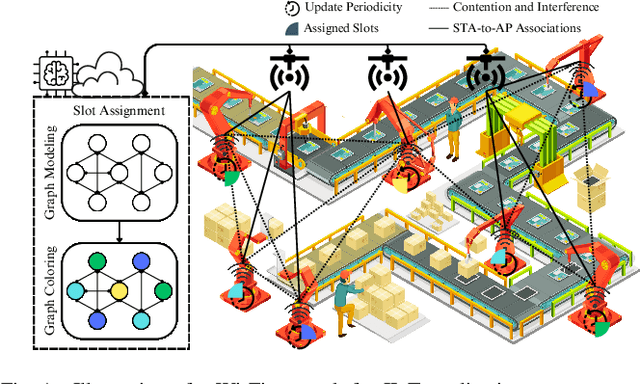
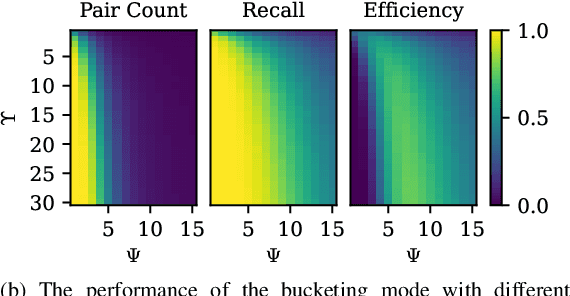
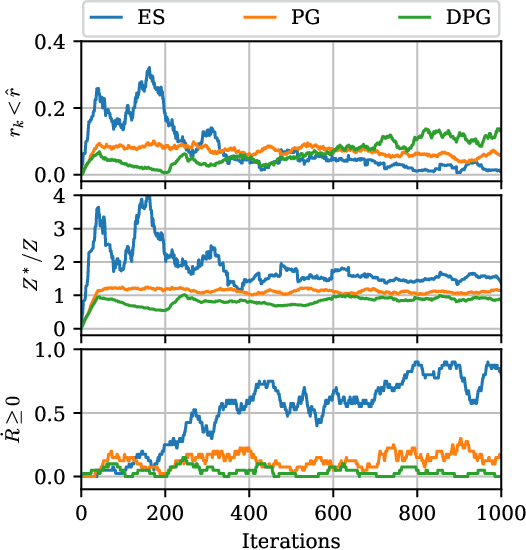
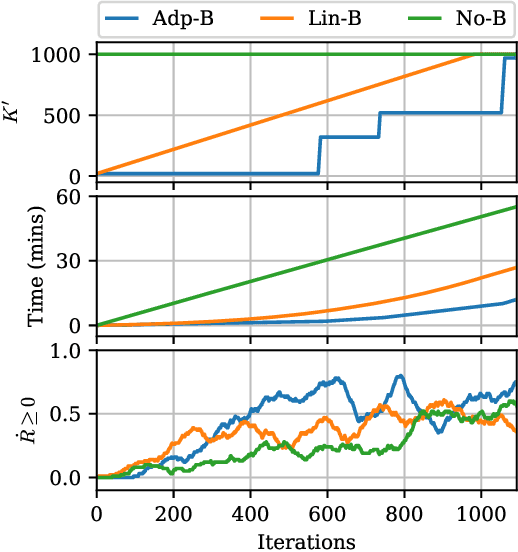
Abstract:Carrier-sense multiple access with collision avoidance in Wi-Fi often leads to contention and interference, thereby increasing packet losses. These challenges have traditionally been modeled as a graph, with stations (STAs) represented as vertices and contention or interference as edges. Graph coloring assigns orthogonal transmission slots to STAs, managing contention and interference, e.g., using the restricted target wake time (RTWT) mechanism introduced in Wi-Fi 7 standards. However, legacy graph models lack flexibility in optimizing these assignments, often failing to minimize slot usage while maintaining reliable transmissions. To address this issue, we propose ScNeuGM, a neural graph modeling (NGM) framework that flexibly trains a neural network (NN) to construct optimal graph models whose coloring corresponds to optimal slot assignments. ScNeuGM is highly scalable to large Wi-Fi networks with massive STA pairs: 1) it utilizes an evolution strategy (ES) to directly optimize the NN parameters based on one network-wise reward signal, avoiding exhaustive edge-wise feedback estimations in all STA pairs; 2) ScNeuGM also leverages a deep hashing function (DHF) to group contending or interfering STA pairs and restricts NGM NN training and inference to pairs within these groups, significantly reducing complexity. Simulations show that the ES-trained NN in ScNeuGM returns near-optimal graphs 4-10 times more often than algorithms requiring edge-wise feedback and reduces 25\% slots than legacy graph constructions. Furthermore, the DHF in ScNeuGM reduces the training and the inference time of NGM by 4 and 8 times, respectively, and the online slot assignment time by 3 times in large networks, and up to 30\% fewer packet losses in dynamic scenarios due to the timely assignments.
SIG-SDP: Sparse Interference Graph-Aided Semidefinite Programming for Large-Scale Wireless Time-Sensitive Networking
Jan 20, 2025



Abstract:Wireless time-sensitive networking (WTSN) is essential for Industrial Internet of Things. We address the problem of minimizing time slots needed for WTSN transmissions while ensuring reliability subject to interference constraints -- an NP-hard task. Existing semidefinite programming (SDP) methods can relax and solve the problem but suffer from high polynomial complexity. We propose a sparse interference graph-aided SDP (SIG-SDP) framework that exploits the interference's sparsity arising from attenuated signals between distant user pairs. First, the framework utilizes the sparsity to establish the upper and lower bounds of the minimum number of slots and uses binary search to locate the minimum within the bounds. Here, for each searched slot number, the framework optimizes a positive semidefinite (PSD) matrix indicating how likely user pairs share the same slot, and the constraint feasibility with the optimized PSD matrix further refines the slot search range. Second, the framework designs a matrix multiplicative weights (MMW) algorithm that accelerates the optimization, achieved by only sparsely adjusting interfering user pairs' elements in the PSD matrix while skipping the non-interfering pairs. We also design an online architecture to deploy the framework to adjust slot assignments based on real-time interference measurements. Simulations show that the SIG-SDP framework converges in near-linear complexity and is highly scalable to large networks. The framework minimizes the number of slots with up to 10 times faster computation and up to 100 times lower packet loss rates than compared methods. The online architecture demonstrates how the algorithm complexity impacts dynamic networks' performance.
Opportunistic Scheduling Using Statistical Information of Wireless Channels
Feb 13, 2024



Abstract:This paper considers opportunistic scheduler (OS) design using statistical channel state information~(CSI). We apply max-weight schedulers (MWSs) to maximize a utility function of users' average data rates. MWSs schedule the user with the highest weighted instantaneous data rate every time slot. Existing methods require hundreds of time slots to adjust the MWS's weights according to the instantaneous CSI before finding the optimal weights that maximize the utility function. In contrast, our MWS design requires few slots for estimating the statistical CSI. Specifically, we formulate a weight optimization problem using the mean and variance of users' signal-to-noise ratios (SNRs) to construct constraints bounding users' feasible average rates. Here, the utility function is the formulated objective, and the MWS's weights are optimization variables. We develop an iterative solver for the problem and prove that it finds the optimal weights. We also design an online architecture where the solver adaptively generates optimal weights for networks with varying mean and variance of the SNRs. Simulations show that our methods effectively require $4\sim10$ times fewer slots to find the optimal weights and achieve $5\sim15\%$ better average rates than the existing methods.
Graph Representation Learning for Contention and Interference Management in Wireless Networks
Jan 15, 2024Abstract:Restricted access window (RAW) in Wi-Fi 802.11ah networks manages contention and interference by grouping users and allocating periodic time slots for each group's transmissions. We will find the optimal user grouping decisions in RAW to maximize the network's worst-case user throughput. We review existing user grouping approaches and highlight their performance limitations in the above problem. We propose formulating user grouping as a graph construction problem where vertices represent users and edge weights indicate the contention and interference. This formulation leverages the graph's max cut to group users and optimizes edge weights to construct the optimal graph whose max cut yields the optimal grouping decisions. To achieve this optimal graph construction, we design an actor-critic graph representation learning (AC-GRL) algorithm. Specifically, the actor neural network (NN) is trained to estimate the optimal graph's edge weights using path losses between users and access points. A graph cut procedure uses semidefinite programming to solve the max cut efficiently and return the grouping decisions for the given weights. The critic NN approximates user throughput achieved by the above-returned decisions and is used to improve the actor. Additionally, we present an architecture that uses the online-measured throughput and path losses to fine-tune the decisions in response to changes in user populations and their locations. Simulations show that our methods achieve $30\%\sim80\%$ higher worst-case user throughput than the existing approaches and that the proposed architecture can further improve the worst-case user throughput by $5\%\sim30\%$ while ensuring timely updates of grouping decisions.
Knowledge-Assisted Deep Reinforcement Learning in 5G Scheduler Design: From Theoretical Framework to Implementation
Sep 17, 2020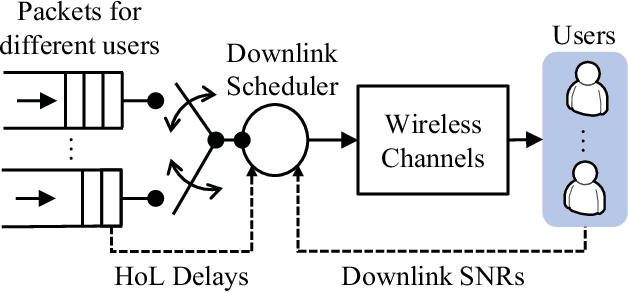
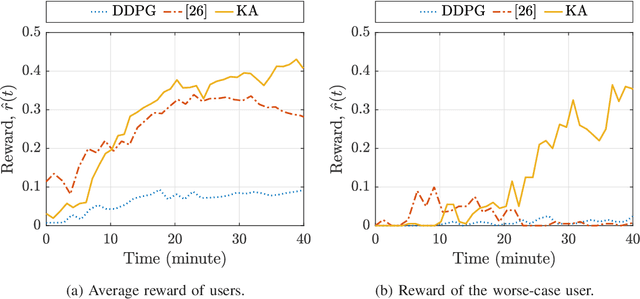
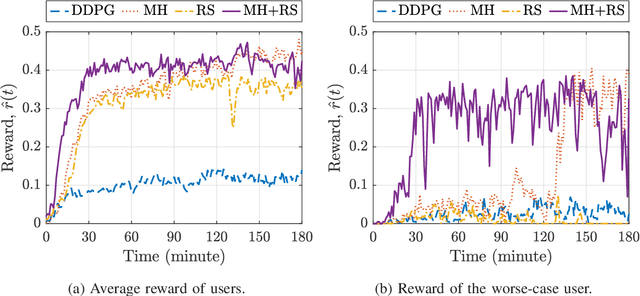
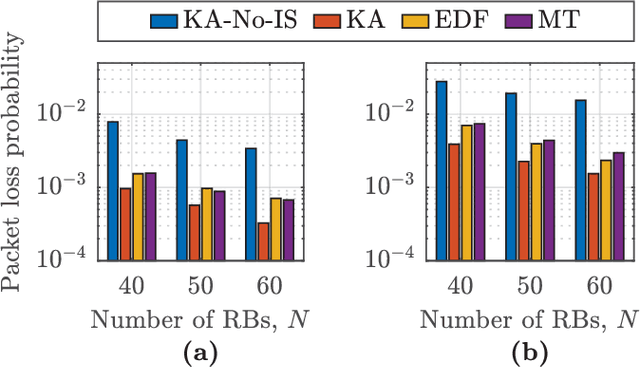
Abstract:In this paper, we develop a knowledge-assisted deep reinforcement learning (DRL) algorithm to design wireless schedulers in the fifth-generation (5G) cellular networks with time-sensitive traffic. Since the scheduling policy is a deterministic mapping from channel and queue states to scheduling actions, it can be optimized by using deep deterministic policy gradient (DDPG). We show that a straightforward implementation of DDPG converges slowly, has a poor quality-of-service (QoS) performance, and cannot be implemented in real-world 5G systems, which are non-stationary in general. To address these issues, we propose a theoretical DRL framework, where theoretical models from wireless communications are used to formulate a Markov decision process in DRL. To reduce the convergence time and improve the QoS of each user, we design a knowledge-assisted DDPG (K-DDPG) that exploits expert knowledge of the scheduler deign problem, such as the knowledge of the QoS, the target scheduling policy, and the importance of each training sample, determined by the approximation error of the value function and the number of packet losses. Furthermore, we develop an architecture for online training and inference, where K-DDPG initializes the scheduler off-line and then fine-tunes the scheduler online to handle the mismatch between off-line simulations and non-stationary real-world systems. Simulation results show that our approach reduces the convergence time of DDPG significantly and achieves better QoS than existing schedulers (reducing 30% ~ 50% packet losses). Experimental results show that with off-line initialization, our approach achieves better initial QoS than random initialization and the online fine-tuning converges in few minutes.
A Tutorial of Ultra-Reliable and Low-Latency Communications in 6G: Integrating Theoretical Knowledge into Deep Learning
Sep 13, 2020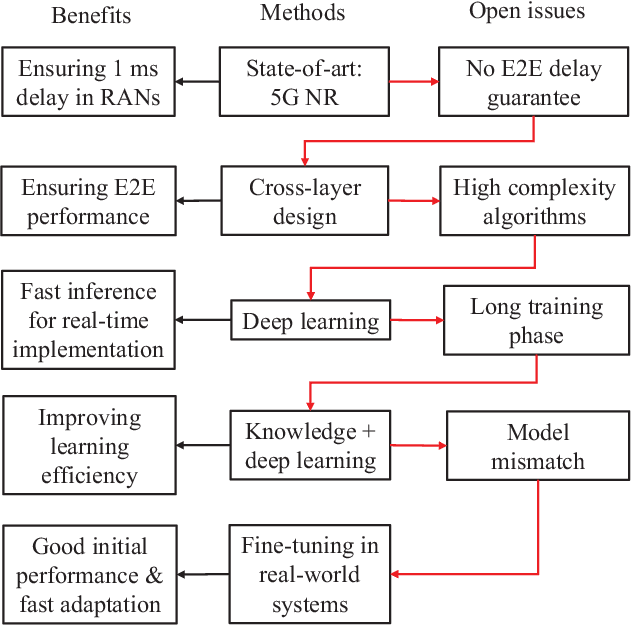
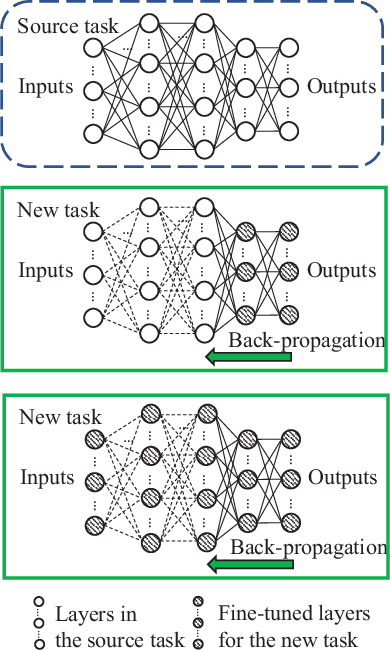
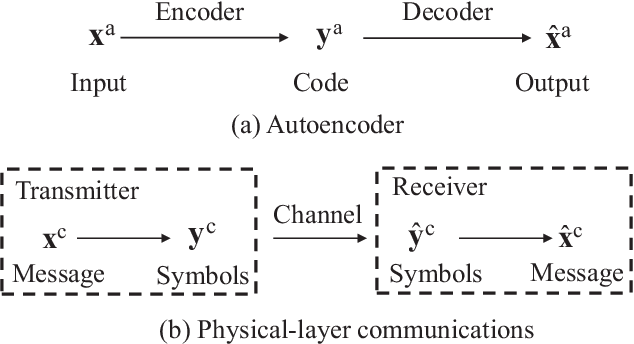

Abstract:As one of the key communication scenarios in the 5th and also the 6th generation (6G) cellular networks, ultra-reliable and low-latency communications (URLLC) will be central for the development of various emerging mission-critical applications. The state-of-the-art mobile communication systems do not fulfill the end-to-end delay and overall reliability requirements of URLLC. A holistic framework that takes into account latency, reliability, availability, scalability, and decision-making under uncertainty is lacking. Driven by recent breakthroughs in deep neural networks, deep learning algorithms have been considered as promising ways of developing enabling technologies for URLLC in future 6G networks. This tutorial illustrates how to integrate theoretical knowledge (models, analysis tools, and optimization frameworks) of wireless communications into different kinds of deep learning algorithms for URLLC. We first introduce the background of URLLC and review promising network architectures and deep learning frameworks in 6G. To better illustrate how to improve learning algorithms with theoretical knowledge, we revisit model-based analysis tools and cross-layer optimization frameworks for URLLC. Following that, we examine the potential of applying supervised/unsupervised deep learning and deep reinforcement learning in URLLC and summarize related open problems. Finally, we provide simulation and experimental results to validate the effectiveness of different learning algorithms and discuss future directions.
Deep Learning for Ultra-Reliable and Low-Latency Communications in 6G Networks
Feb 22, 2020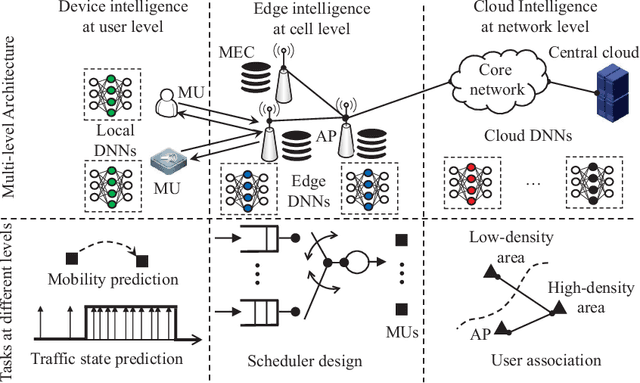
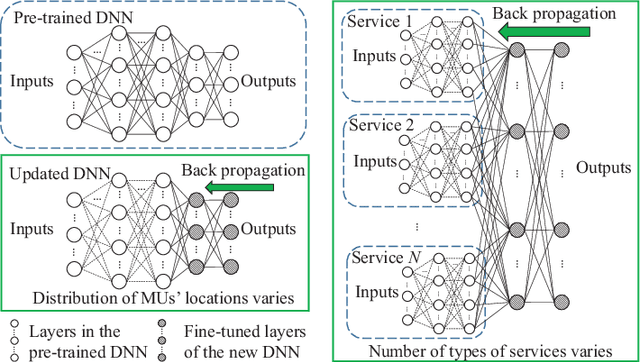
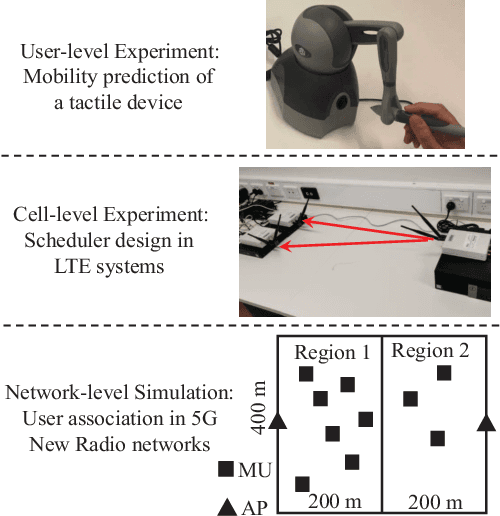
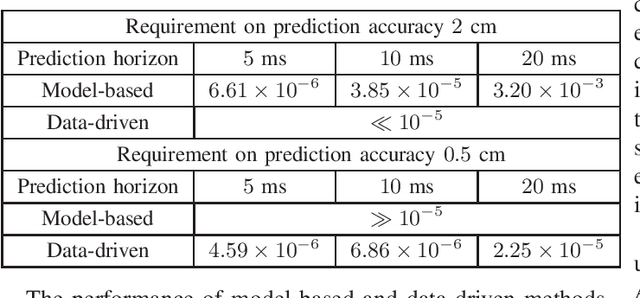
Abstract:In the future 6th generation networks, ultra-reliable and low-latency communications (URLLC) will lay the foundation for emerging mission-critical applications that have stringent requirements on end-to-end delay and reliability. Existing works on URLLC are mainly based on theoretical models and assumptions. The model-based solutions provide useful insights, but cannot be directly implemented in practice. In this article, we first summarize how to apply data-driven supervised deep learning and deep reinforcement learning in URLLC, and discuss some open problems of these methods. To address these open problems, we develop a multi-level architecture that enables device intelligence, edge intelligence, and cloud intelligence for URLLC. The basic idea is to merge theoretical models and real-world data in analyzing the latency and reliability and training deep neural networks (DNNs). Deep transfer learning is adopted in the architecture to fine-tune the pre-trained DNNs in non-stationary networks. Further considering that the computing capacity at each user and each mobile edge computing server is limited, federated learning is applied to improve the learning efficiency. Finally, we provide some experimental and simulation results and discuss some future directions.
 Add to Chrome
Add to Chrome Add to Firefox
Add to Firefox Add to Edge
Add to Edge